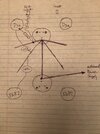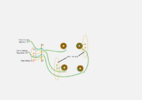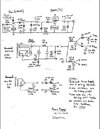@Positron, I beg you to start your own thread regarding your theories. Regarding THIS build, your assertions and references to builds you once again refuse to share serves to only confuse me and chase helpful folks into the weeds.
Please, please cease and desist!
I simply asked a question concerning the lower frequency response, whether designed for warped LPs or other. I had to
respond to Izzy's inaccurate scientific reply.
The Laws I posted, including RCA Radiotron Designers Handbook info, has been understood for 70+ years.
Obviously not theories.

I used the exact same laws and procedures in my components. It is simply a matter of starting with the complex RIAA equalization
and going on from there.
Important. With 3 reactive components influencing each other, a complex situation, a simple fix will not
correct the RIAA inaccuracies. One will never reach maximum sonic quality/naturalness.
Please remember that parts quality is important. I was glad to see Izzy list Vishay's, excellent quality parts. Now for coupling
caps, jacks, 6N wire.
Another help is to replace electrolytics (whether black gates or typical electrolytics) with poly capacitors, especially the decoupling
capacitors "next" to the vacuum tubes, connecting to RL of each tube's plate. You will have to investigate which poly caps are the best,
and whether one large or many smaller values in parallel is best. But then again, investigating, R&D, is half the fun.
"THIS build" is titled as "
New Worlds Best Phono-Stage", remember....
but how many will falsely believe that it is the worlds best?
If versatility is what one is looking for, this is not bad as rectifiers, power transformer, power cord etc can alter the sound
due to the limited filtering sections (that affect the sonics). Have fun with experimenting.
Have fun with your project and I hope your success.
pos








